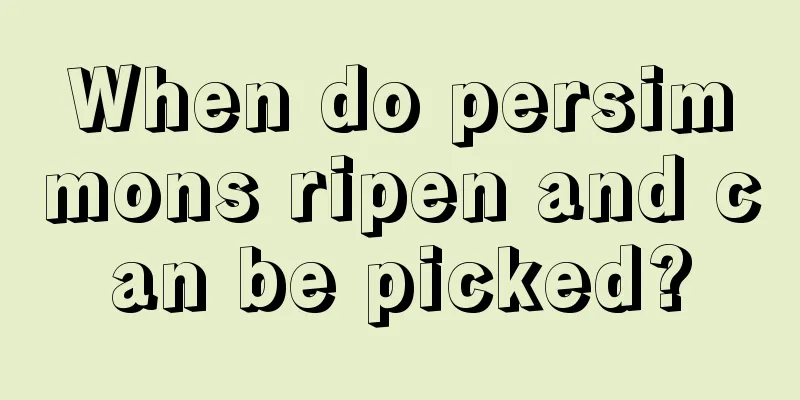Methods of grape pruning in summer

|
Grapevine pruning is essential to improving grape yield and quality. Summer pruning is particularly helpful in improving ventilation and light conditions, properly distributing nutrients, balancing growth and fruiting, and controlling the growth of new shoots. Here's how to prune grapes in summer. 1. Time and method of summer pruning of grapevines 1. Bud removal (first summer pruning): From the time when buds germinate to the time when leaves unfold. Manually remove buds at the base of canes, buds on weak branches, stunted buds, and thin, pointed buds from double buds. The purpose is to reduce nutrient loss and promote the growth of main buds. 2. Tip determination (second summer pruning): The new shoots grow to 7-8 leaves and the inflorescence is obvious. Combined with tying up new shoots, determine the number of shoots to be retained based on variety, soil fertility, tree vigor and planned yield. 3. Adjust new shoots (third summer pruning): When tying the new shoots for the second time. Keep new shoots with inflorescences, remove fruitless branches, adjust branch density, and ensure ventilation and light transmission. 4. Notes on summer pruning: Remove the weak and keep the strong to promote the production of large clusters. Go up and leave, to prevent the result part from moving up too quickly. Remove dense branches and leave sparse ones to ensure even distribution of branches. Go early and stay late to take advantage of the strong buds that sprout late. For areas lacking fruiting branches, retain latent buds to cultivate fruiting branches for next year. Adjust the amount of remaining shoots according to the size of the ear. 2. Winter pruning In mid-October, avoid going too early or too late. A combination of long, medium and short tip pruning is adopted, and the cutting length is reasonably determined according to the strength of the fruiting mother vine and the planned yield. 3. 8 methods for high-yield pruning Bud removal: remove weak buds, forked buds and useless hidden buds, and retain the main buds. Tip setting: Adjust the number of tips to be retained according to the growth and load of the plants. Pinching: Pinch off the fruiting vines when there are 6-7 leaves left to increase the fruit setting rate. Remove lateral shoots: control the germination of lateral shoots and reduce nutrient consumption. Pinching inflorescences: For varieties prone to flower and fruit drop, appropriately reduce the inflorescence load. Fruit thinning: Thin out the seeds in dense clusters to increase the size of the fruit. Tendril removal: Remove tendrils in time to avoid disorder of branches. Tying up new shoots: tie up vines at the right time, avoid cross-tying, and use soft materials. In general, these pruning methods can effectively improve the yield and fruit quality of grape vines. You can refer to them based on actual conditions.
|
<<: How to prune a pomegranate tree?
>>: How to prune a bird of paradise
Recommend
How do nightshade flowers bloom at six in the morning?
1. How to open Nightshade is a clock flower that ...
How to grow daisies on the balcony and what to pay attention to
1. Adequate sunlight An environment with sufficie...
Why can't you plant jasmine at home? Where is the best place to plant it?
Jasmine can be grown at home, but the plant has h...
The efficacy and function of butterfly flower
1. Chinese herbal medicine Butterfly flower is a ...
How to propagate Podocarpus and what to pay attention to
Podocarpus reproduction method Podocarpus can be ...
Where is the best place to plant ivy? Can I grow it on the balcony?
1. Environmental requirements 1. Adequate light: ...
Cultivation methods and precautions of Sichuan pepper
1. Maintenance methods 1. Temperature: It is not ...
Five things to pay attention to when growing African violets in pots
The size of the African violet potted flowerpot s...
How to propagate nectarines
Tuber propagation of nectarine Tuber propagation ...
Special medicine for pepper anthrax. Pictures of pepper anthrax and what medicine to use for prevention and treatment.
What medicine to use for pepper anthrax Anthracno...
How to pull roses to climb walls
How to operate Roses do not have climbing organs ...
How to save seeds of Clivia
Where do Clivia seeds come from? Clivia, also kno...
How to care for calla lily
Growing conditions of calla lily When cultivating...
When to plant garlic?
The timing of garlic planting is crucial, especia...
Pests of Dichondra chinensis and their control
Horseshoe beetle encounters scarab beetles and mo...









